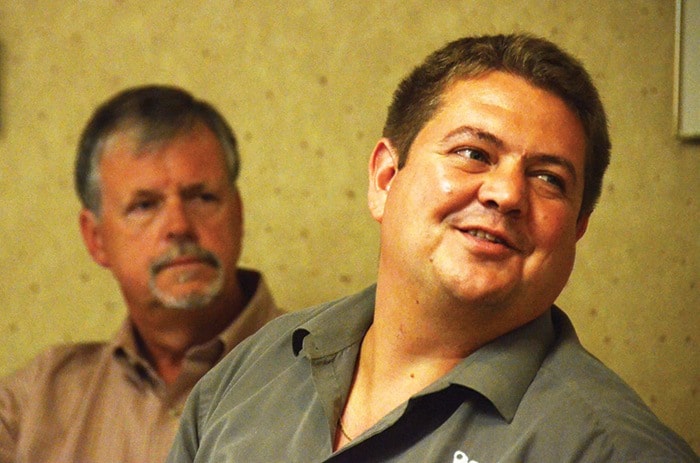After more than seven months of research and development, a plan is being finalized to help local First Nations members be better equipped for success in the workforce.
Chris Roberts, regional economic development officer with the Nanwakolas Council of First Nations – who represent the interests of seven First Nations on Vancouver Island and the adjacent South Central Coast of B.C. – presented a summary last week of the research that has been taking place with the help of Human Capital Strategies (HCS), who directed the most recent phase of the project.
“This is sort of the final stretch of what has been a long process of collaboration and consultation,” Roberts says.
“It outlines 41 specific tactics and recommended actions targeting how there can be a more coordinated approach among various stakeholders in Aboriginal development, including service providers, education, employers – obviously – and the First Nations.”
The summary presentation last week at the Discovery Inn was one last chance for various stakeholders to have input on the strategy before the final document is completed later this month for presentation to the WorkBC Community and Employer Partnerships Fund, which provided $110,000 for the study.
The issues the study found – and therefore the ones the strategy attempts to address – range from social issues like housing support and childcare issues within First Nations communities, to a lack of understanding from employers of how to engage First Nations members to the disconnect between training provided by schools and the skills required by employers.
The goals of the strategy are to increase Aboriginal participation and success in education and credential attainment, along with increasing First Nations’ members awareness of and readiness for meaningful employment, creating mechanisms for effectively connecting members with employers and vice-versa and developing a job coaching and mentoring strategy.
“There’s a lot of work that needs to be done now,” Roberts says. “We’ve got a good guideline – a road map, if you will – and there will be multiple partners and organizations that need to be involved in a coordinated and collaborative approach. It’s a framework that is holistic and all parts of it are intertwined, but one of the parts of it that shone through was meaningful employment creation and career opportunities for our members.”
So the research is done, and now the heavy lifting begins in terms of implementation.
“The key to making all of this successful will be the relationships that have been built through this process,” says Dave Bazowski of HCS. “I mean, we talk about the over 250 engagements, but for this strategy to succeed, Chris [Roberts] and his team and the six fundamental organizations are really going to have to rely on the relationships that have been built and they’re going to have to really move quickly to capture the momentum that is there, otherwise it will be something that sits on a shelf somewhere. It will be something that looks good on paper.”
The other key element moving forward will be the coordination of those leading the implementation and the various stakeholders involved.
“We heard a lot during this process about fragmentation and organizations doing similar things,” Bazowski says, “so hopefully part of what this strategy does is help to coordinate the resources that are already in place, as well.”
The document will be available for the public to view on Nanwakolas Council’s website (nanwakolas.com) once finalized this summer, “and we’ll hit the ground running with it in September,” Roberts says, once all stakeholders have had a chance to read the document and see how they can best be a part of the solutions being offered.
